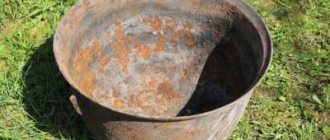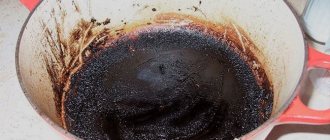In summer, water in the gas tank usually does not make itself felt. But in the cold season it can create a lot of problems for the driver. A car that has been parked on the street all night may simply not start. This is because moisture from the tank often gets into the fuel line and freezes there, preventing the circulation of fuel. Therefore, care should be taken to remove it from the system in advance - before the onset of frost. So how do you do this?
Most often, the situation with the accumulation of gasoline and water in the fuel tank occurs in the off-season and in the cold season. The fuel that returns to the tank from the system has time to heat up and gradually warms up the remaining fuel. The moisture that is in the atmospheric air (it enters through the neck cover) comes into contact with the elevated temperature and condenses on the walls. Due to the difference in density of the two fluids, excess accumulates at the bottom and can enter the fuel system.
Water entering the fuel supply system threatens, first of all, with damage to electronic dosing systems - sensors, as well as injectors. Therefore, it is important to promptly detect the presence of water in the tank, as well as remove it from there. To do this, you will have to separate water and gasoline.
How to remove the smell of gasoline and diesel fuel: from a canister, a barrel, how to remove it from your hands, clothes, useful tips and recommendations
Since each category includes several effective methods, they should be considered separately. And then everyone will decide for themselves what is better to use, and which method should be abandoned.
Expert opinion
Ekaterina Korneva, expert in the field of care, cleanliness and beauty
I will help you understand all the intricacies.
As a result, the injector nozzles overheat, the sealing washers under the injectors melt, and the metal is deformed. There were nine of them, priced from 115 to 570 rubles; in the photo gallery they are presented in alphabetical order. How to wash diesel fuel from clothes in a washing machine: is it possible quickly, remedies, old stains For any questions, please contact me, I will be happy to answer!
Cleaning diesel injectors at home.
- It is almost impossible to remove water 100%
, but you can significantly reduce its content in a particular substance. Refuel only at proven stations, where you have had to refuel more than once, and you are satisfied with the quality. Giant corporations produce their own fuel and value their reputation, unlike artisanal firms that sell everything; - Try to fill the tank with gasoline as often as possible, since condensation forms in an empty tank, which is essentially the same as water;
- Do not fill the tank in damp and wet weather, as there is a high probability of condensation from the tank underground;
- Use alcohol to remove water. Chemistry comes to our aid again, which says that alcohol interacts well with water, and in this way it is recommended to purify gasoline from water.
Anti-corrosion protection - average. Water binding is average, like most. The price is reasonable, but overall there is nothing to praise. Satisfactory result.
The most incredible way to get my hair back!
This is just a DISASTER ! And after all, my hair did not start falling out in one day, but systematically - day after day I watched how the hair left my head: while combing, washing, even while sleeping. (read more…)
Current standards
Each type of diesel fuel requires a certain level of content of various elements , including sulfur and sulfur compounds. In addition to many other characteristics (cetane number, distillation temperature, kinematic viscosity, etc.), the purity class, that is, not exceeding the standard of impurities or pollutants, is a key indicator of the quality of diesel fuel.
Today, experts note the low quality of diesel fuel produced by domestic manufacturers.
According to European standards , in first class diesel fuel the maximum permissible sulfur concentration should not exceed 50 mg/kg of product. However, despite this, manufacturers in the CIS countries allow the amount of sulfur in diesel fuel to be up to 0.01%. This causes fuel contamination and engine problems.
Special formulations
There are products on sale that can be used to remove the smell of diesel fuel from many surfaces. They vary depending on the material from which the product is made. Compositions with maximum effectiveness:
OdorGone Professional
Before using it, initial cleaning is required using a soap solution. When the product dries, the composition is sprayed onto it.
To prevent it from weathering, the item is covered with film or placed in a case for up to 8-12 hours. Price – 815 rubles.
Borger Gut Duft
This is an effective odor remover for cars . The finished solution can be used to treat:
The composition contains binding and biocidal elements that destroy unwanted aromatic molecules in 10 minutes. The spray is sprayed throughout the car interior, the windows and doors are closed, and then the air conditioning is turned on to recirculate. Price – 235 rubles.
Do you like guys with long hair?
Not really
Dr. Beckmann
Liquid concentrate is able to cope with foreign odors absorbed into clothing. It can be used to process different types of fabrics .
The composition of the odor remover for clothes and linen is hypoallergenic, has an antistatic effect, tested by dermatologists, and does not irritate the skin. Price – 340 rubles.
We fight old pollution
In cases where it was not possible to get rid of diesel fuel from clothes in the shortest possible time, then you should resort to one of the methods described below:
- Start the machine in intensive wash mode and high temperature. First add stain remover to it. To enhance the effect, you can apply a little stain remover to the necessary areas before washing and wash them.
- We remove diesel fuel from durable fabrics using gasoline. To do this, apply a little gasoline to a cotton cloth and rub the stain. Repeat the procedure until the dirt is completely destroyed and change the cloth if necessary. The main disadvantage of this method is the unpleasant, toxic odor that gasoline has. It is best to carry out such procedures in the fresh air, and then use tips for removing fuel odor from clothes.
- Dilute ordinary ammonia (as an analogue - ammonia) with water in a ratio of at least 1/7 and soak the fabric in it. It takes about 12 hours to completely remove a diesel stain. This method is not recommended for items that are too bright, as they may fade after washing.
- Diesel stains are easily removed using high temperatures. To clean, use an iron and paper (or several napkins), which you place over the stained area. Iron with a hot iron over the stain. This will help transfer traces of diesel fuel onto the paper.
How to clean diesel fuel from water
Method 1. You need to let the diesel fuel settle
After the water has settled (it is recommended to stand for at least 10 days) and collected at the bottom, the fuel can be drained with a hose.
Method 2. Filters
A fine filter, a fuel separator, and even a protective “mesh” can help in this matter (but not a water filter). Modern filters are capable of filtering out about 95% of bound and free water. The advantage of filters is the screening out of microparticles, the size of which depends on the filter model.
How to separate gasoline and water: methods and nuances of the procedure
- To make it easier to remove diesel fuel stains, generously sprinkle the contaminated area with table salt and rub it in with a brush or rag. It takes time for diesel fuel to be absorbed. This may take about 40 minutes. Please ensure that diesel fuel does not come into contact with other things, as such stains are very easily transferred.
- Detergents. You can remove a solarium stain using dish soap. It is necessary to dilute a small amount of detergent with warm water and rub into the contaminated area of the fabric. Be sure to ensure that your items are suitable for this stain removal method. Some strong detergents can permanently damage your items.
- Using a simple mixture of lemon juice and vegetable oil to remove diesel stains, it is possible to remove very strong stains. To do this, mix oil and lemon juice (citric acid concentrate will also work) in equal parts, and then rub the resulting solution into the stain using a cotton swab or cloth. After 10 minutes, the clothes must be washed.
- Hydrogen peroxide purchased at a pharmacy removes fresh diesel stains from fabric. To enhance the effect, you can add it to a mixture of lemon juice and oil.
- Hand paste. All auto mechanics know that cleaning paste can be used not only on hands, but also on clothes. Rub the paste into the stain for about 15 minutes, and then rinse the item well.
- A miracle remedy that our grandmothers used is a mixture of laundry soap, soda and detergent. Mix all parts equally. For convenience, grind the laundry soap on a grater and fill all the ingredients with warm water.
- Soak the stained item for several hours and then wash it using powder and conditioner. This method can be used to remove not only diesel fuel stains, but also many other contaminants.
The main method of separation is based on the physicochemical properties of these two liquids. There are several of these properties:
How to clean paraffin from diesel fuel
The above filters will be ineffective due to the fact that the paraffin particle size can be less than 1 micron.
Method 1. Freezing
At low temperatures, paraffin will form “crystals” that are much easier to remove. The process can be speeded up by stirring/shaking.
Method 2. Additives
If the need to remove paraffin from diesel fuel is due to the sedimentation of paraffin at low temperatures, then adding kerosene (TS-1) or special defrosters from a store with auto chemical goods to the diesel fuel will help.
Specifics of operation of diesel engine injectors
Injector flushing should be done as often as possible to ensure stable engine operation and avoid financial costs for unforeseen breakdowns. To protect the injectors, it is also worth installing special filter elements that do not allow microparticles larger than 15 microns to pass through. These filters are installed directly in the injector itself, as well as in the fuel system of the vehicle engine.
Before flushing, it is necessary to prepare a special device that will supply voltage to the nozzle. This device consists of a 12-volt power source (power supply or “crown”), a switch and wires.
The wires from the power supply must be connected to the switch, and two free leads must be made from it, which will be attached to the injector contacts. The entire system must supply current to the injector when the switch button is pressed.
Along with this device, you only need carburetor cleaning fluid. An important point when choosing such a liquid is the diameter of the extension on the cap. It should fit tightly into the nozzle hole, forming a tight connection. The cost of all equipment will not exceed 100 rubles.
Industrial cleaning methods
Partial purification of diesel fuel can be achieved through a mesh filter . It can trap particles larger than 80 microns. If the size is smaller than specified, then impurities can easily pass through the filter, which still leads to complete contamination of the diesel fuel.
Diesel fuel can be purified through filtration . Carrying out this operation is very important because it allows you to clean the fuel from dust that may enter the tank during refueling. The presence of dust leads to a lack of fuel in the combustion chamber and a subsequent drop in engine power. Structurally, filters are made of a housing in which the filter element is placed. More complex models, in addition to solid particles, can also retain water, which improves the performance of diesel fuel.
But, at the same time as their functionality increases, such devices also require increased attention, since a filter filled with water does not allow fuel to pass through, which is absolutely unacceptable. Unrefined fuel bypasses the barrier. This can lead to damage to both the engine and the entire fuel system.
Separation differs from filtration in increased reliability. If the fuel is very dirty, then conventional filters cannot clean it completely. This is where separators are used. Such equipment is capable of purifying fuel from harmful impurities. The quality of cleaning does not depend on the amount of foreign substances. Like filters, separators can remove not only solid particles from fuel, but also water. But their structure is much more complex.
How to remove diesel fuel from clothes at home
- In practice, it is much preferable to clean the injectors by removing them. However, there is a minus here, since the remaining elements of the system are not washed.
- Comprehensive cleaning of the fuel system involves disassembling and removing all elements (pump, injectors, fuel tank, etc.). Then the injectors and injection pumps are checked on stands, cleaned, defective, repaired or replaced.
Taking into account the above information, it becomes clear that the stable operation of a diesel engine directly depends on the cleanliness of its fuel system. It is recommended to clean the injector on a diesel engine at least once every 12 months or every 25-30 thousand km. mileage (whichever comes first).
How I found my ideal hair growth product
Hello dear! I want to share with you my solution to the sensitive problem of hair loss . The problems are very serious, at least for me. I would never have thought that this misfortune would touch me, especially at the age of 29 (read more...)
How to flush the fuel system of a diesel engine yourself
As you can see, a number of factors lead to the formation of a layer of deposits and carbon deposits on the working surfaces of the injectors. If you do not clean it, then sooner or later the engine will begin to malfunction. In this case, washing must be done in a timely manner.
The main task is to remove minor deposits and carbon deposits from working surfaces, which will help avoid more serious consequences. To do this, you can visit a service station and use the injector washing service at a special stand.
You can also do the procedure for cleaning diesel engine injectors yourself at home. To do this, you need to have injector flushing fluid. As a rule, such liquids are available for sale. Many car enthusiasts successfully use one of the simplest and most affordable solutions called Solvent.
You can wash the injector with Solvent on both gasoline and diesel engines. Such a cleaner can be from different manufacturers; WYNNS is a proven solution, but there are other high-quality analogues.
Now let's look at cleaning in practice:
- At the very beginning, a Solvent jar from a suitable manufacturer is purchased.
- Then you need to prepare a pair of gas-resistant hoses (length about 80 cm). The diameter of the hoses must be suitable for fitting onto the injection pump fittings.
- Next, the standard hoses are removed from the high-pressure fuel pump and pre-prepared ones are put on.
- The free ends of the hoses are inserted into a container (a plastic container, bottle, etc. will do) into which Solvent Vince or another similar cleaner is pre-filled.
- Let us add that you need to additionally install a simple fuel filter on the hose through which fuel is supplied to the injection pump. This will prevent possible dirt from getting out of the plastic container.
- The fuel supply hose itself must also be placed in a container so that the end is lowered to the very bottom, since air cannot be allowed to enter the injection pump.
- Then the container with the inserted hoses must be securely secured in the engine compartment;
- Now the engine can be started, after which in idling mode you should “accelerate”, raising the speed to medium and higher. After applying the gas, you need to let the engine idle for about 2-3 minutes and turn off the engine.
- After this there is a pause. After 20-25 minutes, the deposits should soften (acidify), after which the procedure must be repeated.
- The end can be considered the moment when the solvent in the container is almost finished. At the same time, it is important to prevent the engine from stalling because the flushing liquid in the container runs out.
Regarding the last point, you need to understand that many fuel injection pumps on diesel engines have elements inside that require active cooling by fuel during pump operation. During cleaning, diesel fuel is replaced with flushing liquid, but the cooling principle does not change.
Taking into account this feature, you can additionally use a long “supply” hose of the cleaner, making sure that the part of the hose through which the solvent goes to the pump is also immersed in a second container. This container should be filled with cold water, and the purifier itself will not overheat.
The final stage can be considered assembling in the reverse order, connecting standard hoses and test running the internal combustion engine. After the engine begins to operate steadily at idle and other speeds, you can begin to operate the car.
Please note that during the cleaning process, you should avoid getting the washing liquid on your skin or eyes to avoid getting a chemical burn. It is also necessary to observe safety precautions, avoiding liquid spills in the engine compartment, etc. The composition is highly flammable and tends to evaporate, which can ultimately lead to a fire if careless.
By the way, if one can of solvent is not enough for cleaning (for example, the power system is too dirty), you need to have two cans of flushing. As the liquid in the main container decreases, you need to add cleaner from the second can.
Then you need to turn off the engine and leave the car for 12 hours. After this period has expired (heavy deposits will have time to completely acidify), the engine should again operate with the cleaner according to the scheme described above. For this, in fact, you need a second can of solvent.
Equipment for recovery of fuels and lubricants
Let's look at the operating principle of oil regeneration devices using the example of three different devices.
Mobile oil purification unit INTECH GmbH
A mobile device made of carbon steel is designed for maximum purification of mineral and synthetic oils while reducing the volume of filtered water and gases. Productivity – 1400 l/hour.
Cleaning steps:
- Fluid supply and pressure reduction.
- Pumping liquid through the filter of the first separator (decanter) for circulation into the drying circuit.
- Mixing raw materials with a heated liquid, evaporating water and gases in a drying column.
- The final stage: filtering liquids during drying to reduce the amount of insoluble particles.
SOG series liquid purification stands
The units are mainly used at maintenance points for road and construction equipment. insoluble pollutants of fuels and lubricants are deposited in the rotor of a centrifuge-pump equipped with a spiral or disk insert .
The devices are compact and quite effective - cleaning from abrasives according to GOST 17216–2001 - up to 5-10 cl. with initial contamination of 15-17 cells. The water concentration decreases from the initial 1% to the final 0.05%.
Restoration of compressor oil for refrigeration devices
Used compressor oil is pumped into a reactor tank, where it is heated and subjected to neutralization of the refrigerant (ammonia). Then the prepared oil in jet oil centrifuges is purified from water, mechanical inclusions, oxidation products, and adsorbed using silica gel to reduce the acid number .
The purified product is suitable for recycling with a resource of 90-95% of the potential of fresh oil.
Purchasing fuel from our company
Fuel in Belarus is not of the best quality, especially for diesel fuel: its sulfur content is much higher than its European counterparts.
Expert opinion
Ekaterina Korneva, expert in the field of care, cleanliness and beauty
I will help you understand all the intricacies.
In addition, heating a flammable liquid to a high temperature requires strict adherence to safety measures and specially prepared equipment. Solids trap polluting particles, which, when dissolved, dissociate into ions. Restoration of oils with metal hydrides If you have any questions, please contact me, I will be happy to answer!
Diesel fuel purification equipment
Diesel fuel purification unit UVR GlobeCore
Recently, modern equipment manufacturing companies have taken leading positions in this market thanks to the constant improvement of existing installations and the introduction of new developments. Such enterprises include the company GlobeCore , which offers equipment that has proven its effectiveness in solving such problems as diesel fuel purification .
In addition, the company enjoys authority and trust among factories that use modern technology.
The presented range of high-quality products includes multifunctional units for purifying diesel fuel. Enterprises operating in the oil refining industry are increasingly including in their production process flow a vacuum regeneration and purification unit for clarification and purification, as well as removal of aromatics from fuels and petroleum products. The equipment does not significantly, but reduces the sulfur level in the fuel. GlobeCore brand UVR installation ensures the highest degree of purification of diesel fuel after its exhaustion. As a result, the mixture acquires a relatively higher class of purity, comparable to the original one, remains stable and does not undergo oxidation over a long period. In fact, the UVR installation for purifying diesel fuel returns its original properties and characteristics, allowing re-use in production.
This equipment has the following advantages:
- the ability to work in automatic and semi-automatic mode, which eliminates the constant presence of an operator. Human participation is only necessary when starting and stopping the UVR installation, as well as replacing the adsorbent;
- minimal energy consumption;
- versatility of application. Using UVR installations, it is possible to purify not only diesel, but also heating fuels, gasoline, kerosene, and various mineral oils (transformer, turbine, industrial, etc.). The transition from one processed raw material to another does not require complex manipulations. It is enough to simply switch the installation to manual control mode, pump out the remaining oil products from the system, and also replace the adsorbent and filters.
GlobeCore technologies to solve problems of purification and clarification of diesel fuels allows you to avoid unscheduled failure of engine mechanisms and fuel systems, as well as eliminate downtime and costly repairs.
As you know, the Toyota Avensis D-4D diesel engine is made using Common Rail technology (hereinafter referred to as CR), which means that fuel is supplied under high pressure into the common fuel line. Instead of 200 atmospheres in a conventional engine, here it is 1350. This, of course, has its pros and cons.
Eliminate odor
Washing diesel fuel from clothes does not mean removing the smell. Even after a washing machine, the unpleasant odor often remains on things, and during storage in the closet it is transferred to other wardrobe items.
To eliminate the obsessive aroma, you need to hang the item on a clothesline for several days. Products with fragrances will help remove the smell of diesel fuel from clothes, including:
- Fabric softener. It is poured into the machine's ditch and added to the rinse water for hand washing.
- Toothpaste “Mint”. It is applied in a thin layer to the stained area and left for 8-10 hours. Then the clothes are soaped, washed and washed as usual.
- Aroma oils. A few drops of the substance added to the cleaning product will help remove the unpleasant odor from things.
If the smell of diesel fuel has permeated the machine, you should run the wash cycle three times without laundry. First, pour a glass of baking soda into the powder cuvette and drum, then pour in 200 ml of table vinegar, the third time - only with water. Proper cleaning of a washing machine with vinegar not only removes unpleasant odors in the drum, but also removes scale or mold.
It is quite possible to get rid of an unpleasant-smelling, greasy solar stain at home. The main thing is to choose the right product and, if possible, not delay cleaning.
Salt, talc, chalk or starch
- You can wash diesel fuel from colored items using ammonia diluted in water (15 ml per 200 ml). To clean white wardrobe items, use it in pure form or mixed with 3% peroxide in a 1:1 ratio.
- Diesel removes refined gasoline from most dyed fabrics. It is used in pure form or mixed in half with acetone. Place a napkin folded in several layers under the stain, moisten a cotton pad in the substance and begin to rub the stained area. If the disk gets dirty, change it.
- Old traces of fuel are removed with turpentine combined with baking soda and lemon juice. The composition is applied to the contaminated surface and left for half an hour.
To prevent the formation of halos near the stain after cleaning, the fabric around it is moistened with gasoline (water) or sprinkled with starch (talcum powder, chalk).
Folk remedies Recipes for masks At home Hair loss in women How to stimulate growth Causes of hair loss Hair loss in men Review of vitamins Helpful tips











